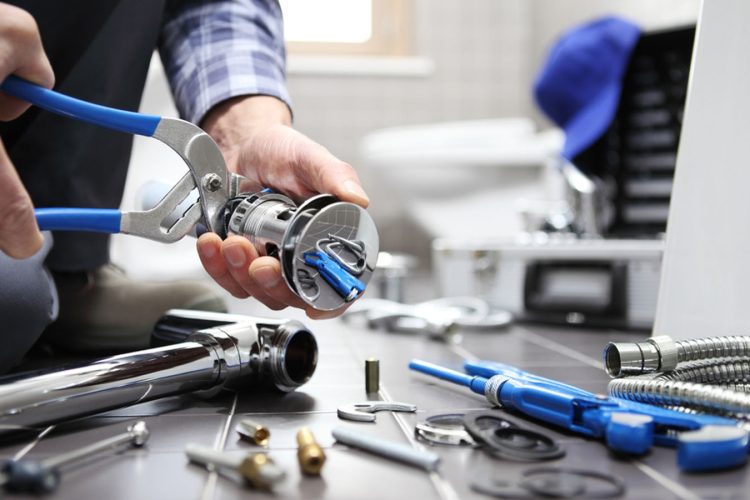
Reverse osmosis (RO), generally regarded as one of the best water filtering techniques, produces pure, delicious-tasting water. RO systems are utilized in the number of applications, including filtration for residences, faucets, and restaurants. There’s probably an RO system out there that will work for you, no matter what kind of water you initially have. The definition of reverse osmosis systems, the benefits of reverse osmosis water at home, their uses, and their advantages are provided here.
Reverse Osmosis: What is It?
When pressure pushes unfiltered water across a semipermeable membrane, a multi-stage water treatment procedure called reverse osmosis extracts impurities from the water. Reverse osmosis systems for homes use three rounds of treatment at minimum to lower contamination levels almost entirely. To produce clean drinking water, water moves from the more concentrated side of the RO membrane—which has more impurities—to the less concentrated side, which contains less contaminants. The term “permeate” refers to the generated fresh water. The leftover concentrated water is referred to as brine or trash.
How is Reverse Osmosis Carried Out?
In reverse osmosis, water is forced through a semipermeable membrane with tiny pores that captures impurities. Water becomes more concentrated during osmosis as it moves across the membrane in order to achieve balance on both sides. On the other hand, pollutants cannot pass through reverse osmosis to reach the less concentrated side of the membrane. For instance, in reverse osmosis, only clean water passes through when pressure is applied to a volume of saltwater; the salt is left behind.
How Does a System of Reverse Osmosis Operate?
Water in a reverse osmosis system is pre-filtered to remove silt and chlorine, and then the water is forced through a semipermeable membrane to remove dissolved solids. Water flows through a postfilter to refine its quality after leaving behind the RO membrane and before it is absorbed into a special faucet. Depending on how many pre filters and post filters are used, reverse osmosis systems might have different phases.
What is Eliminated by Reverse Osmosis?
Through the RO membrane, reverse osmosis eliminates dissolved solids including fluoride and arsenic as well as salt, PFAS, and chlorine. For a wide range of reduction, RO systems further incorporate carbon and sediment filtering. The sediment filter in a RO system eliminates dirt and debris, while the carbon filters eliminate chlorine and unpleasant tastes and odors. By using reverse osmosis, following contaminants can be removed:
- Salted Fluoride Sediment
- VOCs, Chlorine, Arsenic, PFAS, and Microplastics
- Both insecticides and herbicides.
- hefty metals
- Numerous other pollutants
An RO system can remove a wide range of contaminants, not only the ones on this list, which are among the most common ones.
Certain viruses and bacteria are not eliminated by reverse osmosis systems. Your water needs to be microbiologically safe if it originates from a city treatment plant. While some bacteria may be eliminated by reverse osmosis, bacteria may still develop on the membrane and perhaps find their way into your water supply. In order to eradicate viruses and living things, we advise UV disinfection.
What Kind of Preparation is Required For a Reverse Osmosis System?
When the water quality is low, pretreatment can significantly prolong the life of a reverse osmosis membrane. Water contaminated by certain minerals, bacteria, chemicals, or other things can absorb or deposit on a reverse osmosis membrane (RO membrane). Membrane fouling and membrane scaling are terms used to describe the accumulation of impurities in a RO membrane and the formation of inorganic deposits, respectively.
You need to get rid of the impurities before they can damage your RO membrane in order to avoid membrane fouling and scaling. Selecting the right pretreatment system requires understanding the composition of your water because different pollutants call for different pretreatment solutions. For example, well water requires more comprehensive prefiltration than water from the city.
How to Prevent Biofouling in a Reverse Osmosis System
Biofouling is basically the buildup of biological contamination on a reverse osmosis membrane. City-treated water should be free of microbiological contaminants unless a boil water advisory is issued, so homeowners with well water should be the ones most concerned with biofouling. To get rid of biofouling you should look to eliminate the microorganisms that make their way to the membrane. The most practical method for biofouling prevention for reverse osmosis is ultraviolet disinfection.
Bacteria, viruses, parasites, and other microbes are rendered inactive by ultraviolet (UV) radiation in ultraviolet (UV) water disinfection systems. It is important to install a sediment filter prior to the UV system when utilizing one for disinfection purposes. Particles of silt, dirt, and debris can reduce the UV system’s efficiency if they are not combined with a sediment filter. If you and your family are concerned about the safety of your drinking water, adding a UV system to your home’s well water system is imperative.
Why it is Important to Have Reverse Osmosis Water at Home?
Your exposure to possible pollutants is decreased by the RO process, and the water from RO systems can sometimes be superior to that of some types of single-use water bottles. Many of the potentially dangerous diseases and contaminants that are frequently found in tap water can be eliminated with the use of a reverse osmosis system, including: microbes. viruses.
Conclusion:
Although either soft or hard water can be used for cooking, reverse osmosis water is preferred. since no other filtration technique can remove as many pollutants and minerals as reverse osmosis. Therefore, using reverse osmosis water at home guarantees that your food is cooked to the highest standard.





